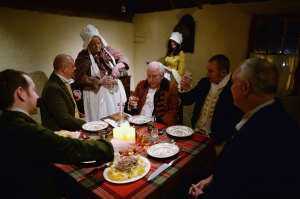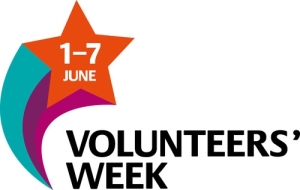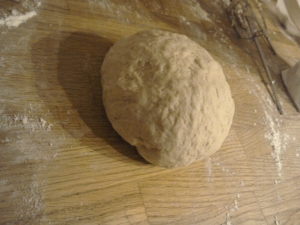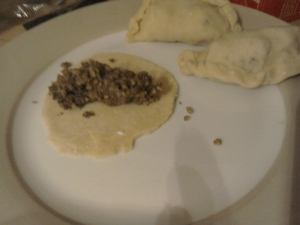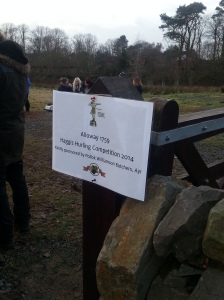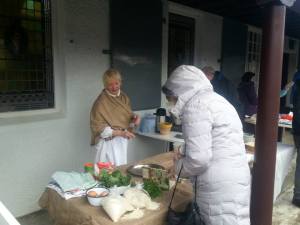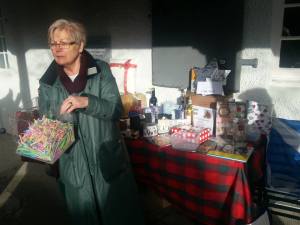Burns supper
The First Burns Supper and Beyond!
With Burns Night approaching, let’s delve in to the origins of the very first Burns Supper in Alloway, and how this grew into the global Burns Suppers held today!
The first Burns Supper was held in July 1801 at the Burns Cottage in Alloway, five years after Burns’ death. Led by Freemason Reverend Hamilton Paul, it was an informal affair between a small gathering of his fellow freemasons. Burns was also part of the Freemasons at Tarbolton, which allowed him to form a large network of friends and acquaintances, and the nine men present at the first Burns Supper were closely connected with him. This first supper was a toast to Burns’ life, and the men recited his most lively works to symbolise his exciting and accomplished legacy as a bard. They considered the first supper a huge success, and arranged to hold a second Burns Supper for his birthday in January. From this the tradition of the Burns Supper began.

At this time Clubs, where (usually) men met regularly to eat, drink and socialise, were well established, and so the format of the Burns Supper lent itself well to this popular style of social gathering in Scotland. At the first Burns Supper ‘To a Haggis’ was read before the haggis was eaten and several rounds of toasts were given; these key rituals have remained the integral components of Burns Suppers throughout the years. Hamilton Paul’s interpretation of these most important elements of Burns’ work and life allowed for the supper format to be easily adapted to other sites out-with the Burns Cottage.
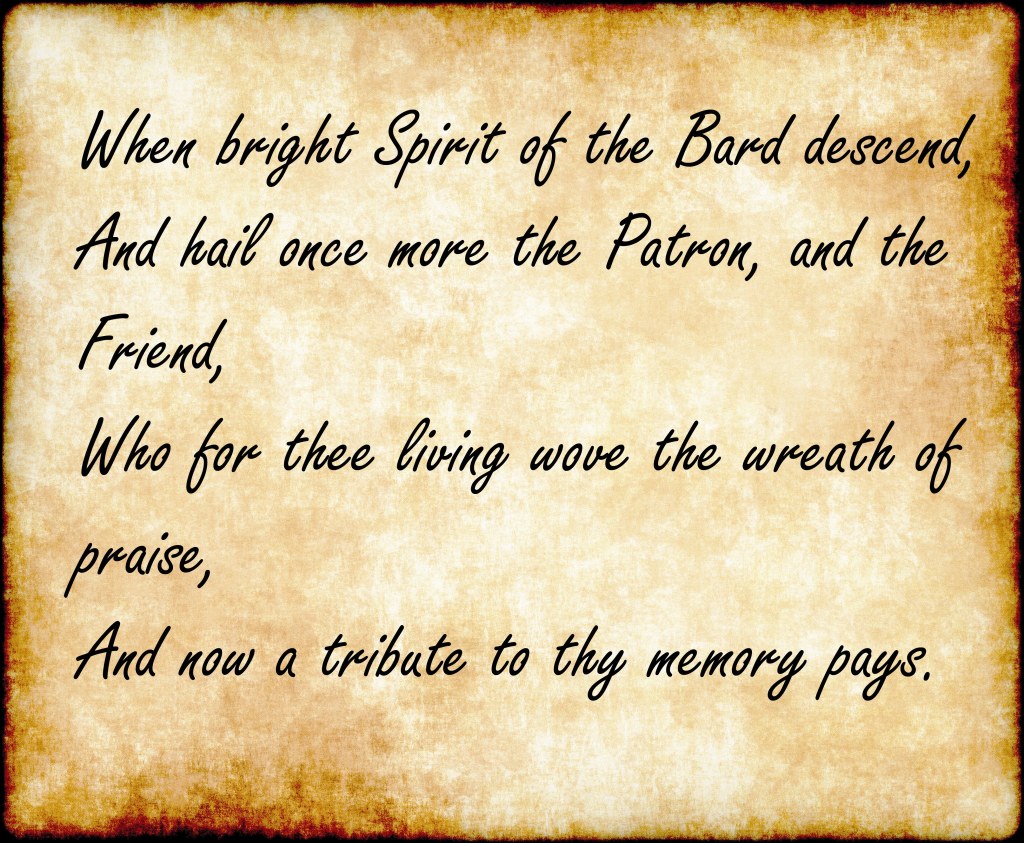
According to writer Clark McGinn the Burns Supper evolved through two phases; the charismatic period and the traditional period. The charismatic period began from the first Burns Supper, and includes the more informal suppers between those directly connected to Burns, or Ayrshire. These were taken on by members of literary clubs in particular.
In Burns’ Day, the literary scene was close-knit and active in meeting at clubs and other occasions. This must have greatly accelerated the popularity of Burns Suppers as these passionate literary fans and writers were proactive in gathering regularly, spreading the idea across Scotland. Spontaneous Burns Suppers began to be held across Ayrshire, and eventually in other parts of Scotland.
Although informal to begin with, they gradually became more regulated and standardised, with stricter rules regarding the format as those outside of Burns’ circles and even Ayrshire circles became involved. The first Burns Supper held in Edinburgh in 1815 was alike to the informal suppers held in clubs across Ayrshire, however the supper for the following year was presented as a formal public dinner, to be held every three years. Attended by Sir Walter Scott, the 1816 Burns Supper pledged to give Robert Burns the honorary tribute he deserved, and so magnificence and splendour were at the forefront of the event. This marked the transition into the traditional period of the Burns Supper format.
What had started out as a Burns Supper had grown into bigger and grander events, which helped Burns’ popularity all over the country intensify. Burns Suppers held in London in the early 1800s introduced the idea to a wider audience, and they were also appearing in India, Australia and America. The traditional period continued throughout the Victorian era, which saw the Burns Festival Procession of 1844 in Alloway and the Burns Federation established in 1885. The Burns Federation sought to unite all of the Burns Clubs across the world, and still exists today as a common link for Burns fans globally.
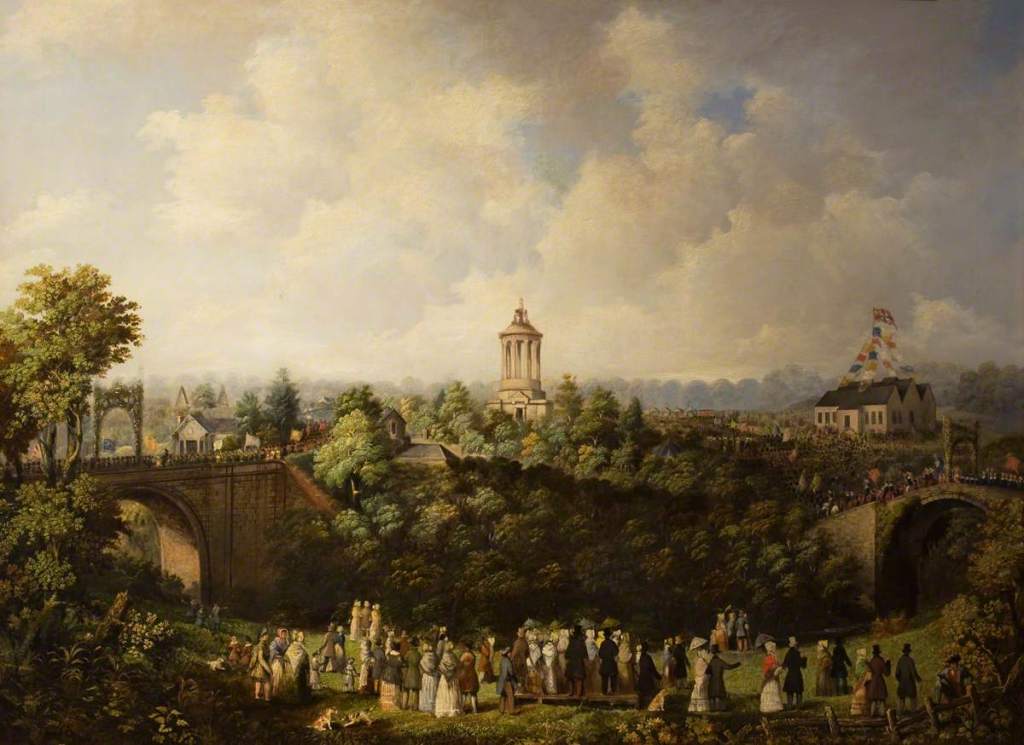
Today Burns Supper celebrations continue all over the world, from the Cottage where the first Supper was held, all the way to Canada and New Zealand. The toast to the haggis is still a key feature of the Burns Supper, and all of the traditions of the first Supper have remained important throughout the years. For Burns Night 2020 we have lots of exciting events on the 25th and 26th of January at the Robert Burns Birthplace Museum, we hope to see you there!
By Kirsty Reid, Learning Trainee
Further Reading: ‘The Burns Supper: A Comprehensive History’, by Clark McGinn

Recipes for a Braw Burns Supper
Stuck for what to make for your Burns Supper later? Here at RBBM, we’ve got you covered. Below are some cracking recipes to get you out that inspiration rut.

Starting it off…
Given that Scotland’s got some of the best, why not kick off your Burns Night celebrations with some salmon? This smoked salmon pâté from Olive Magazine is a great option. Find it here.
Or maybe you want a soup to start? Both cullen skink or cock-a-leekie are classic (and delicious) options. This Nick Nairn recipe is sure to produce a show-stopping cullen skink – available here; and Tom Kitchin’s got you covered for a cock-a-leekie – available here.
Wee Beasties of the Glen
Of course, every Burns Supper needs a haggis to address! The great chieftain o’ the puddin race is much older than the man himself, but it’s on his birthday that most of us gather together to enjoy the dish.
Macsween have a hoard of fantastic recipes available on their website, many of which offer a wholly unexpected take on the humble haggis. One of our favourites are these Wee Beasties of the Glen’ – delicious bite-size haggis treats, coated in oatmeal and then fried. Find the recipe for these here.
Fortunately in these modern times, we can enjoy many different varieties including vegetarian, vegan, kosher and gluten-free – meaning everyone can help themselves to a plate of the good stuff!
Clapshot
You cannae have a Burns Supper without the neeps and tatties. But why not mix it up this year (literally) with a healthy serving of clapshot?
Originating from Orkney, this traditional dish combines both neeps and tatties, adding a wee bit of onion and some chives. Simple but delicious – clapshot is an excellent way to change up your usual Burns Supper.
Author of The Scots Kitchen, F. Marian MacNeill (a native Orcadian), has a traditional recipe for clapshot. You can find this – with a bit of history too – on the Scotsman’s Food and Drink page, here. If you’ve got any vegans at your table, you can swap out the butter for cooking oil.
Cranachan
A classic Scottish dessert – there’s nothing better than fresh raspberries after a hearty haggis meal. Top it all off (of course) with sweet honey, crunchy oats, a healthy dollop of cream and a swig of whisky.
Mary Berry’s take on cranachan is a winner, swapping the traditional crowdie for mascarpone – find her recipe here.
If you have any braw Burns Supper recipes of your own – we’d pure love to see them! Just don’t forget to finish your night off with a wee dram – it’s what Robert would want on his birthday.
How should we celebrate Burns?
In the summer of 1801, nine gentlemen arranged to meet in an Ayrshire alehouse to remember a friend and a poet. They dined on sheep’s head and haggis, proposed a number of commemorative toasts, and heard an ode specially written for the occasion. The presence of the poet was suggested by a portrait presented to the group for the dinner, and the room they occupied was in fact the very spot where their friend was born, 42 years before. When they had finished they resolved to meet on the poet’s birthday the following year. What had taken place was the world’s first Burns Supper.
The format of the Burns Supper has remained essentially the same over 200 years but what other ways can we celebrate Burns in the 21st century? If Burns died today, how would we celebrate his life and work? And what can we learn from the commemoration of other writers or public figures?
In order to answer some of these questions, I think it is important to look at the original Burns Supper and where its inspiration lay. At the time, it was not unusual to remember a famous person or event by holding a dinner. The life of famous men like the politician, Charles James Fox (1749 – 1806), was remembered in ‘Fox dinners’, which took place annually from 1808 – 1907. The Battle of Trafalgar (1805) is still commemorated in ‘Trafalgar Suppers’, patriotic affairs which have a strong naval theme. Although the first Burns Supper took the same idea, it was moulded by the peculiarities of Burns’s life and work in a way unlike any other writer.
Firstly, there was an emphasis on conviviality. It was noted in a minute of the Supper that, ‘The party was such as Burns himself would have joined with heartfelt satisfaction’ with an interesting mix of local notables, including intimates of Burns to whom he had dedicated two of his earliest published works. Secondly, there was a strong creative element. The organizer, Reverend Hamilton Paul (1773-1854), is described (albeit in his own minute) as ‘Chaplain & Laureate’. Paul composed the ode that was recited at the first supper, and was subsequently called upon to write a ‘Birthday Ode’ the following year ‘in praise of the Bard of Coila’. Thirdly, the work of Burns and the meal itself became organically linked. Haggis was chosen as the main dish presumably because of Burns’s poem To a Haggis which was duly read. Sheep’s head has a less obvious Burns connection although this may have been a nod to his mock elegy, The death and dying words of Poor Mailie. The supper was washed down by a series of toasts each of which was ‘drank by three times three’ (perhaps of significance to freemasons; Burns was one). Whisky may have been the drink of choice – there are certainly many references to ‘barley-brie’ in the poems and songs of Burns – but is more likely that claret or a sweet wine such as ‘Malaga’, used to toast old times in Burns’s first version of Auld Lang Syne (December 1788), accompanied the dinner. Finally, the presence of Burns was conjured by the location for the supper – the birthroom of the poet which had since become part of the ‘Burns Head’ tavern – and a portrait of the poet ‘painted on wood [and] intended as a signpost to the cottage’. Therefore, conviviality, creativity, food and drink referencing the work of Burns, and the presence of the poet were all hallmarks of the original Burns Supper.
In rethinking how we celebrate Burns in the 21st century, these elements are all just as compelling as they were five years after the death of Burns but could they be interpreted in different ways?
In my opinion, the best Burns Suppers continue the warmth and friendship of the first ever supper by encouraging friends to get together and each take part in some element of organizing or performing at the supper. The intimacy and enjoyment which radiates from the minutes of the first Burns Supper is often absent today in large scale, formal suppers which formulaically trot out its component parts at the expense of fun and friendship. Liturgy has become lethargy. In modern times, ceilidhs have become more and more popular and, for me, some of the best Burns Suppers involve dancing. In this way, everyone becomes a performer which can help to make the supper less passive and less reverential. The distinction between the ‘top table’ of speakers and ‘body of the Kirk’ dissolves.
The idea of composing new poetry for a supper has largely been lost. This could be because, in Scotland at least, we are still dazzled by the brilliance of Burns. However, this seems like a lost opportunity. By making the Burns Supper a platform for new poetry, like the odes composed by Hamilton Paul, Burns Suppers could encourage new talent while honouring Burns (who often quoted other writers). Seamus Heaney’s Birl for Burns (2008) is a classic example of paying tribute to Burns with an authentic voice. The annual Walter Scott prize for historical fiction, or Developing Dylan 100 (encouraging young people to interpret the work of Dylan Thomas in new ways, such as rap, film, poetry and social media) is an excellent way of celebrating the work of old and the new. Could Burns Suppers complement a similar prize for poetry, the winning work being read across the world at all suppers?
Although the close links between Burns’s work and the format of the Burns Supper have played a large part in making the supper a ‘natural’ way of celebrating Burns, it could be argued that this has also narrowed our awareness of the breadth of all that Burns wrote. How they are performed has too. Restricting what is read at a supper to a handful of the usual poems – To a Haggis, Selkirk Grace, Tam o’ Shanter, and perhaps Holy Willie’s Prayer – does little justice to the richness and depth of the Burns canon. Equally, insisting that these are recited from memory can result that in a hastily read, meaningless parroting of Burns, particularly for those who have little knowledge of the Scots language. Although I appreciate the value of a poem remembered by the heart, why not read from a book? There appears to be a machismo in learning Burns by rote not found with other writers. This could explain why there are very few marathon reading sessions for Burns. Selecting works which mean something to the audience would be a good basis for selecting a poem or song. If you’re a doctor, why not read Death and Dr Hornbook, if it’s a junior Burns Supper then why not ventriloquise with a poem like The Twa Dogs, or The Brigs of Ayr, and if you are concerned about green issues, then why not choose The Humble Petition of Bruar Water, or To a Mouse? Widening the repertoire would do much to diversify and animate the Burns Supper.
On the matter of toasts, I think it would also be healthier to focus on the audience and contemporary issues than outdated nods to the political establishment. Too often, Burns Suppers are perceived to be bastions of cosy self-satisfaction, a reflection of ourselves rather than Burns.
Finally, the presence of Burns continues to be an important element of every Burns Supper, even today. This happens in a number of ways. Like the original Burns Supper, images of Burns abound at more traditional affairs – appearing on everything from napkins to menus to whisky glasses. Unlike the first Burns Supper, Burns is not known personally to those present so some other way of making the poet familiar is needed. The ‘immortal memory’, a eulogy on the life and work of Burns, is a core part of the Burns Supper and is a way of making Burns’s life and achievements known and appreciable. At its worst, this is a dry, dutiful hagiography of Burns; at its best, the immortal memory can make Burns one of the guests.
Celebrating the immortal memory of Burns has extended beyond the supper table with conferences, scholarships, humanitarian awards, sheltered housing, tv and radio documentaries, parades, and even hospital beds honouring Burns and his ideals. These initiatives make remembering Burns less flash-in-the-pan and better reflect modern tastes.
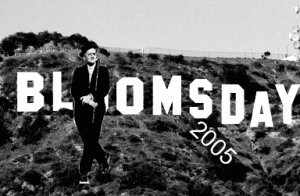
Looking to how other writers are celebrated, Ireland’s annual homage to James Joyce, Bloomsday re-enacts events in the novel Ulysees in a way which utilizes place, people, and performance. This involves dressing up, reenactment of the events in Ulysees, marathon readings of the novel, pub crawls, pilgrimages along the route described in the book, and the playing of music integral to the plot. Bloomsday has style: period costume is important in recapturing the atmosphere, as well as the sartorial style of the author (a literary take on dressing as Elvis). Shakespeare’s birthday is celebrated in his native Stratford-upon-Avon by a procession of local people carrying flowers from his birthplace to his grave, a route lined by flags of the world. The emphasis here is more on the local link with a real man, perhaps deliberate given the conspiracy theories surrounding authorship of plays published in the name of William Shakespeare.

In 2010, the work of Philip Larkin was remembered in Hull by a trail marked with giant fibreglass toads bearing the words of Larkin, each marking a place associated with Larkin in the city. The toads – a playful reference to Larkin’s eponymous poem – were partly designed by the community and auctioned afterwards for charity. Events which capture the public imagination, bring people together, and act in the spirit of the writer or their work are far more likely to interest those unaware of that writer and what they achieved.
At Robert Burns Birthplace Museum, our mission is to celebrate Burns 365 days a year. This is also the theme we have chosen for 2015. The centrepiece of the year is a new experience for visitors – an Express Burns Supper. Visitors are greeted by a costumed guide and bagpiper, and taken to Burns Cottage where they enjoy haggis, neeps, and tatties, and cranachan, and a few short works read around the table. They then toast the memory of Burns in the small room where he was born and where the world’s first Burns Supper took place. All in under an hour. This is a short burst of Burns for visitors to Scotland who may know nothing about him. Although we hope that the Supper will attract large numbers of visitors to the site, the real measure of success will be whether or not guests read Burns the next day. Ultimately, this would be, in the words of Hamilton Paul, the most fitting ‘tribute to the memory of departed genius’.
Volunteers’ Week 2015 : Meet our Volunteers – Maureen
5 years ago, I saw an ad in the Ayrshire Post . Volunteers needed for a new museum opening in Alloway, this was the New Robert Burns Birthplace Museum
I had just retired and was looking for something to fill my time, not just to do charity work but to keep the learning ethos on going , hence I started on the journey (I shall call it ), my knowledge of Robert Burns was very limited. As a school girl we were bused down from Paisley to visit the cottage, I was so bored I threw toffee papers at the film of Tam and Meg as they galloped over the fields.
Today it is a different story ,I am now a guide at RBBM .I am often to be found taking school groups around the site in all kind of weather, I was standing on the Brig O’Doon ,the snow swirling round me ,I was telling a class of 6yr olds about Robert Burns, one little schoolgirl tugged my coat and asked “are you Robert Burns sister” as I knew so much about him
Now another hat I wear is shop assistant in the “Burns an’ a’ that ” shop in the town, we sell NTS goods and local crafters work .

Its a great way of interacting with the public, I am often to be found at the Highlight Talks held in the Museum every Wednesday where one of the volunteers will give an in depth talk on one piece in particular ,it’s an excellent way of getting the knowledge to enhance the visitors experience.
So I would say to anyone thinking about volunteering with the NTS, jump on board ,the journey is amazing.
I am so glad I answered the advert in the Ayrshire Post!
The Bachelors Club, Tarbolton
Once I started working at the Robert Burns Birthplace Museum I realised that this is only one small part of the wider Burns landscape. Part of this landscape, which I had not visited until working here at the museum, was the Bachelors Club in Tarbolton. The Bachelors Club has a different feel from Burns cottage – you have more of a sense of Robert Burns as an animated, creative and sometimes mischievous young man.
The building itself is a 17th century house in Tarbolton, Ayrshire and is just a short drive from the cottage in Alloway. In its restored state it shows an 18th century domestic interior from when John Richard and his family lived in the lower floor. The upstairs was used for functions; such as the country dancing lessons which Robert Burns enjoyed much to the distain of his father!
When you visit the Bachelors Club you start the tour on the ground floor in the 18th century interior and as you sit in the room it feels like you have stepped back in time. With little traffic noise all you can hear is the creak of people sitting on the chairs, the upstairs floor boards, and the ticking of the clock. As it was pointed out to us by Alistair, our guide, the building has a long history which both pre and superseded Burns. But it is Burns’s connection to the property which has ultimately saved it.
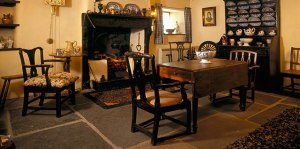
To gain access to the upper floor you head back out and up the external stair way, the Bachelors Club itself was in the first floor room which is the same footprint as the two rooms downstairs. The upstairs space was reopened as one room when the National Trust for Scotland took on the property; prior to this the area had been divided into two rooms with a partition wall.
The space is full of Burns memorabilia, relics and nicknacks, after a few minutes of exploring I found my favourite objects – some clay pipes! While these might not seem exciting, I am a fan of them, and I loved the way they were all hanging higgity on the wall next to one of the two fireplaces. The fire places are really interesting too – Alistair explained to us that it was thought that the circles on the floor around the fire place are to help protect the inhabitants from evil spirits. This is because the fire place is always ‘open’ compared to the windows and doors which can be shut. This little bit of superstition is kept going by the staff at the property for ‘auld’ times sake.
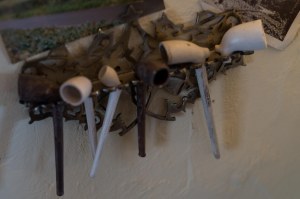
This space is where the Club was formed by Robert, his brother Gilbert, and some friends from the parish. Other than the images of Burns and his poems on the wall you could really be sitting in the room waiting on the Bachelors Club arriving for their meeting. The Club itself is very interesting, what I found most interesting was the questions proposed for debating by the members.
The first question is one which maybe reflects the young male membership – as a poor farmer with no money, if you have a choice between a rich woman with no personality and a poor woman you love who would you choose? (Robert reportedly debated for the girl with no money!) Topics they also discussed were issues around politics, education and philosophy.
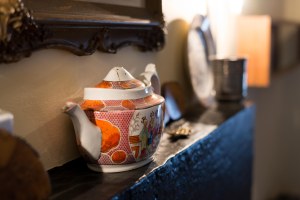
While in the cottage you experience Burns’s life as a child, the Bachelors Club introduces you to the Burns who we think we know. I felt like Burns could just saunter into the Club and start debating.
This gem in the Burns landscape is one which should not be missed, the amazing atmosphere and the knowledgeable staff brings this little building to life.
Opening times Friday to Tuesday 1pm to 5pm. This property has seasonal openings, and this year (2015) is open through to the 30th September. For more information, please click!
To Poland with Love: Haggis Pierogi Recipe
Got more Haggis than you know what to do with? This last recipe in our January series looks to Poland for culinery inspiration. Pierogi are dumplings, usually filled with simple ingredients like potato, ham, or cheese, and can be either fried or boiled. They are very popular, and for good reason!
To make a Haggis version is very simple, so this recipe shouldn’t be at all difficult.
Haggis Pierogi
Ingredients:
3 cups flour
3 quarters of a cup water
2 eggs
teaspoon salt
Haggis
Process
Cook your Haggis according to package instructions and leave it to cool.
Seive the flour into a bowl
Beat the two eggs in a separate bowl.
Make a well in the centre of the flour and pour in the beaten eggs.
Stir the flour and egg mixture, adding in water as you go until the mixture becomes crumbly.
Use your hands to work the crumbly dough until it starts to come together.
Form it into a big bowl and rest for 30 minutes.
Once the dough has rested, put some flour on your counter and rolling pin and roll the dough thinly.
Cut with cookie cutter.
Spoon haggis into each circle, and pinch the edges down.
Put a frying pan on the stove with some oil, and once the oil is hot start firing in the pierogi.
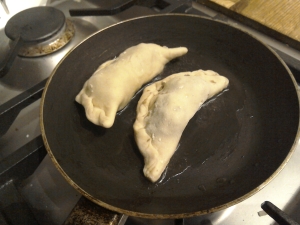
Cook until golden brown and serve with your favourite condiments!
Burns and WW1
War was an issue Robert Burns felt strongly about. He wrote many poems and songs on the subject, as well as spending the latter part of his life with the Royal Dumfries Volunteers. Since his death, his works and actions have been interpreted very differently at various points in history, and by a range of governments and societies. This capacity to re-interpret his works was very apparent during the Great War.
Throughout World War One, Burns continued to be celebrated. Although activities at Burns clubs dwindled during the war years, their actual numbers increased from 227 in 1915, to 254 in 1918. Events such as the garlanding of his statue in Glasgow and the placing of the floral tribute in Dumfries continued, and Burns concerts and celebrations were held throughout the war, now often in aid of troop entertainment and charitable fundraising. Burns suppers also continued, and were even held at the front.
During the war the militaristic aspects of the Bard’s work were emphasised, as well as his desire to stand up to tyranny and oppression. Scots Wha Hae was included in several martial anthologies, including Oxford University Press’s ‘Poems of War and Battle’, published in 1914. His time spent as a volunteer was also very useful for those claiming he was an ardent militarist, and he appeared on recruitment posters such as this one, which encouraged men to join up.
At a Burns Supper in London in 1918, John Buchan made this declaration in his Immortal Memory: ‘If you wish for a statement of the Allies’ War Aims you will find it through the poetry of Burns. Freedom, tolerance, sympathy in the State; devotion, courage, sacrifice in the citizen – it is all there’.
However, it should be noted that this idealised view of Burns’s poetry was not shared by all. An American ambassador who heard Buchan’s speech remained sceptical, saying: ‘it is not quite clear to my mind how a man can work in a speech about the Allies on a Robert Burns background’.
Other groups sought to distance themselves from the official view of Burns, emphasising the radical, rather than military, elements of poems like Scots Wha Hae, and also pointing out how Burns often wrote about the negative aspects of war and the hardship it brings. Willie Steward, organiser of the Scottish Independent Labour party, believed that Burns was being misrepresented by the government, and declared: ‘I cannot help but think if [statesmen] had ranted of Burns less and imbibed his spirit more, it had been better for us all to-day’.
As is often the case with our Bard, his views are difficult to pin down. He wrote many poems emphasising the negative aspects of war, but also supported the American and French revolutions. His time spent with the Royal Dumfries Volunteers may have been for pragmatic rather than ideological reasons, as he was probably attempting to make amends for earlier ill-advised comments supporting the French Revolution. However, as can be seen above, whatever his views during his lifetime, his legacy after his death continued in ways beyond his control.
Alloway 1759 – a Burns night to remember!
Last weekend, the world celebrated the birthday of Scotland’s national Bard, and the Robert Burns Birthplace Museum joined in with gusto! The festivities actually began the previous weekend with the ‘Alloway Sessions’, two days of fabulous live music celebrating the songs of Burns and other Scottish favourites. With traditional folk music in the kitchen, a ceilidh band in the barn, and a fantastic programme of Burns music in the education pavilion, we were certainly treated to a wonderful array of performances and would like to thank everybody that took part and came along to support us!
On Thursday 23rd January, our recreation of the first Burns Supper allowed visitors to step back in time to 1801, enjoy good food and meet costumed characters in the cottage. We would like to say a big thanks to our catering staff and to our volunteers and staff members who got involved with the re-enactment.
Into the weekend, and the morning of the 25th dawned with such torrential rain that we were all quite concerned about being washed away! Thankfully, the weather brightened up a little in the afternoon, clearing the way for the day’s events. Costumed volunteers in each room of the cottage told the story of the Burns family, with William and Agnes introducing the Barn and the Byre, John Murdoch telling us about his pupils in the Spence, and Aunty Betty spooking us all with scary stories in the kitchen. We even had a couple of genuine 18th century villagers visiting the cottage that day! Weekend guided walks and buggy trips were available as usual, and we also introduced two very successful ‘roving guides’ who were on hand to give anybody looking lost a nudge in the right direction.
Sunday again threatened to be a wash out, but thankfully the skies cleared at midday and the events were able to go ahead as planned. Once again, our costumed characters took to the cottage to introduce themselves to the floods of visitors that poured through the doors. In the pavilion, the education team worked hard to create a programme of children’s events for our youngest visitors, who tackled their own ‘Burns Super Supper Challenge’ and had the chance to win themselves a certificate. Our catering team set up a cafe in the education pavilion and kept our visitors well fed and watered with a variety of refreshments. We were also visited by a selection of owls from Hoots Houlets who set up residence in the barn, and the field outside the cottage played host to the World Haggis Hurling Championships, kindly sponsored by Pollok Williamson. Our volunteers ran a very popular tombola outside the education pavilion, and also staged some ‘pop-up’ recitations of Burns poetry around the museum and wider site. Finally, we were pleased to be able to welcome some musical entertainment in the forms of Ayr Pipe band and Forehill Primary’s ‘Alloway Rap’.
All in all, we at RBBM enjoyed our Alloway1759 celebrations immensely. We would like to say a big thank you to all of our fantastic volunteers who gave up their time to come and join us; to our catering, retail and event staff who worked tirelessly to ensure everything went ahead; to our education team who created a wonderful programme of activities for children; and to all of our external and internal helpers who contributed to making the event the success it was! But most of all we would like to thank those of you who visited us over the weekend and helped us make the Bard’s birthday the special occasion that it should be… we’ll see you next year!
